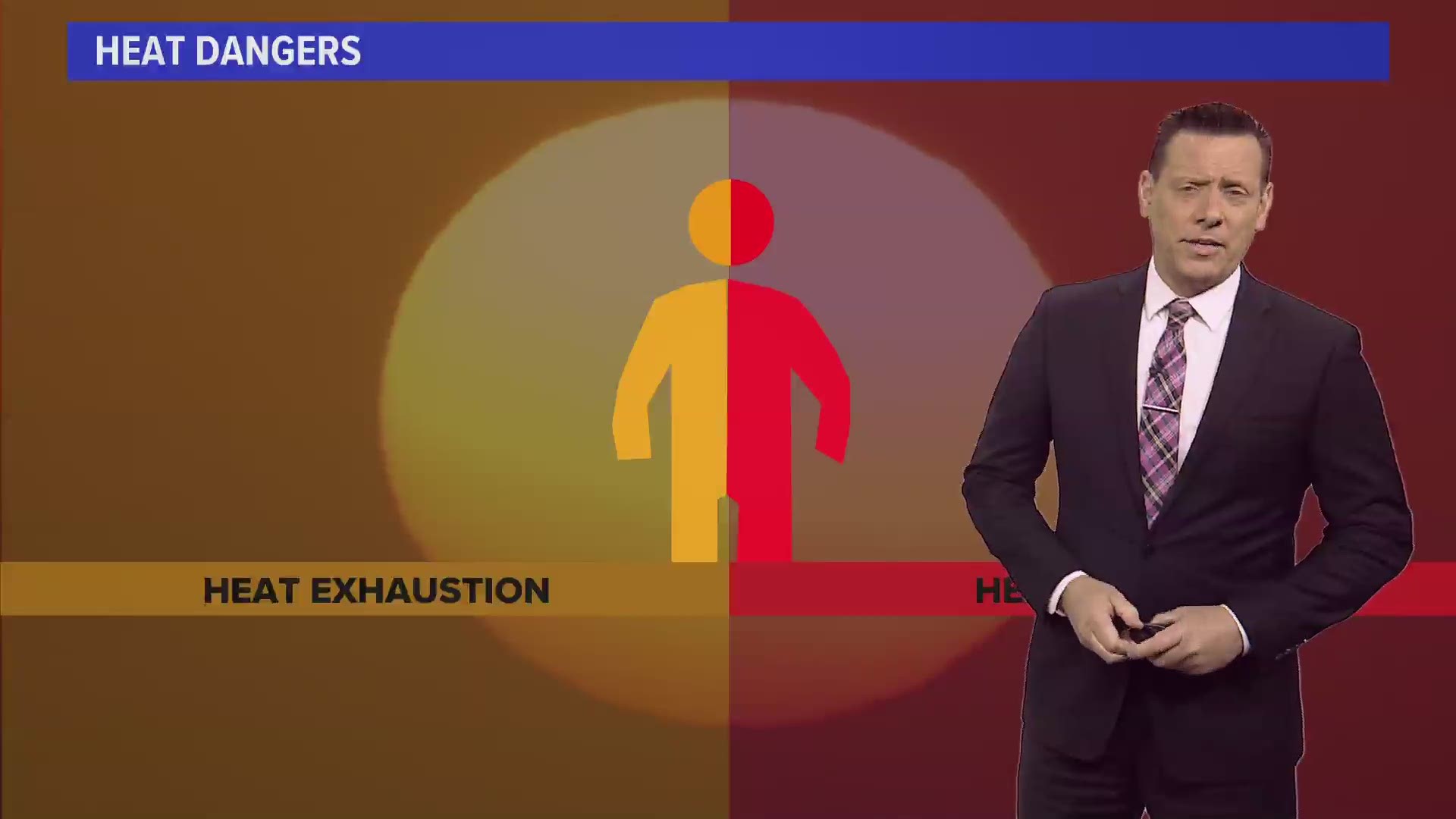ARIZONA, USA — May 1 was National Heat Stroke Awareness Day, and in Arizona, understanding your body's warning signs can help protect you against potentially life-threatening illness.
Heat exhaustion vs heat stroke
Signs of heat exhaustion:
- Faint or dizzy
- Excessive sweating
- Cool, pale or clammy skin
- Rapid, weak pulse
- Muscle cramps
- Nausea or vomiting
Treating possible heat exhaustion:
- Get to a cool, air-conditioned place
- Drink water
- Take a cool shower or use a cold compress
Signs of heat stroke:
- Throbbing headache
- No sweating
- Red, hot, dry skin
- Rapid, strong pulse
- Possible loss of consciousness
- Nausea or vomiting
If you or a family member is suffering from heat stroke, immediate attention is necessary, so call 911.
Look before you lock, hot car index
Depending on the temperature outside, your car can reach nearly double the temperature within 60 minutes.
It is important to check for children and pets before leaving the car for an extended period. Within 30 minutes, a car can reach higher than 100 degrees if the outside temperature is above 80 degrees.
If the outside temperature is at 100 degrees, it can reach 119 degrees within 10 minutes, 134 degrees within 30 minutes and 143 degrees within an hour.
Hot car safety
Put a diaper bag or travel bag in the passenger seat as a visual cue that a kiddo is in the car.
Make a habit of opening the back door every time you park.
Ask childcare to contact you right away if your child has not arrived as scheduled.
Confirm who is responsible for getting children from the car before locking up.
Paws to pavement, protecting your furry friend
As a reminder, the hot pavement or concrete can seriously hurt your pet's paws.
At 105 degrees, concrete can reach 155 degrees and asphalt can reach 170 degrees.
At 100 degrees, concrete can reach 145 degrees and asphalt can reach 165 degrees.
At 95 degrees, concrete can reach 140 degrees and asphalt can reach 155 degrees.
Have a safe and healthy summer!
For extensive 12 News weather coverage, subscribe to the 12 News YouTube channel.

